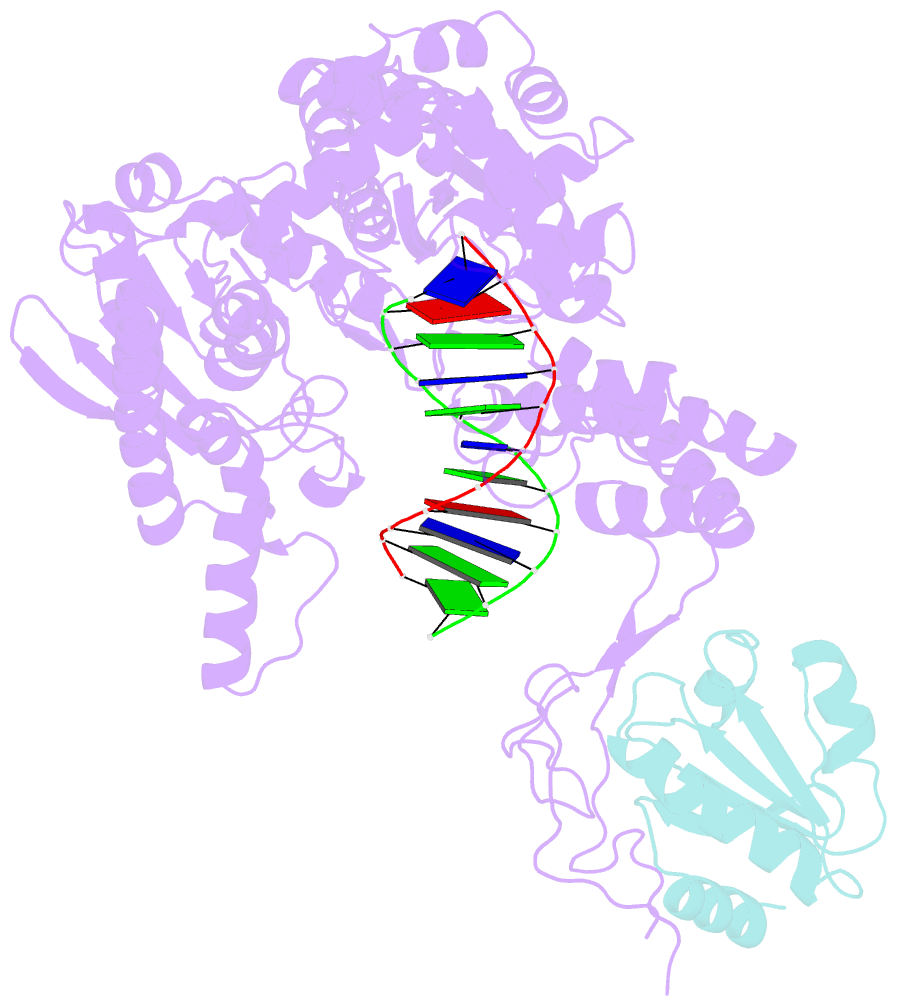Summary information and primary citation
- PDB-id
- 1x9s; SNAP-derived features in text and JSON formats;
DNAproDB
- Class
- transferase-electron transport-DNA
- Method
- X-ray (2.7 Å)
- Summary
- T7 DNA polymerase in complex with a primer-template DNA containing a disordered n-2 aminofluorene on the template, crystallized with dideoxy-ctp as the incoming nucleotide.
- Reference
- Dutta S, Li Y, Johnson D, Dzantiev L, Richardson CC, Romano LJ, Ellenberger T (2004): "Crystal structures of 2-acetylaminofluorene and 2-aminofluorene in complex with T7 DNA polymerase reveal mechanisms of mutagenesis." Proc.Natl.Acad.Sci.Usa, 101, 16186-16191. doi: 10.1073/pnas.0406516101.
- Abstract
- The carcinogen 2-acetylaminofluorene forms two major DNA adducts: N-(2'-deoxyguanosin-8-yl)-2-acetylaminofluorene (dG-AAF) and its deacetylated derivative, N-(2'-deoxyguanosin-8-yl)-2-aminofluorene (dG-AF). Although the dG-AAF and dG-AF adducts are distinguished only by the presence or absence of an acetyl group, they have profoundly different effects on DNA replication. dG-AAF poses a strong block to DNA synthesis and primarily induces frameshift mutations in bacteria, resulting in the loss of one or two nucleotides during replication past the lesion. dG-AF is less toxic and more easily bypassed by DNA polymerases, albeit with an increased frequency of misincorporation opposite the lesion, primarily resulting in G --> T transversions. We present three crystal structures of bacteriophage T7 DNA polymerase replication complexes, one with dG-AAF in the templating position and two others with dG-AF in the templating position. Our crystallographic data suggest why a dG-AAF adduct blocks replication more strongly than does a dG-AF adduct and provide a possible explanation for frameshift mutagenesis during replication bypass of a dG-AAF adduct. The dG-AAF nucleoside adopts a syn conformation that facilitates the intercalation of its fluorene ring into a hydrophobic pocket on the surface of the fingers subdomain and locks the fingers in an open, inactive conformation. In contrast, the dG-AF base at the templating position is not well defined by the electron density, consistent with weak binding to the polymerase and a possible interchange of this adduct between the syn and anti conformations.





